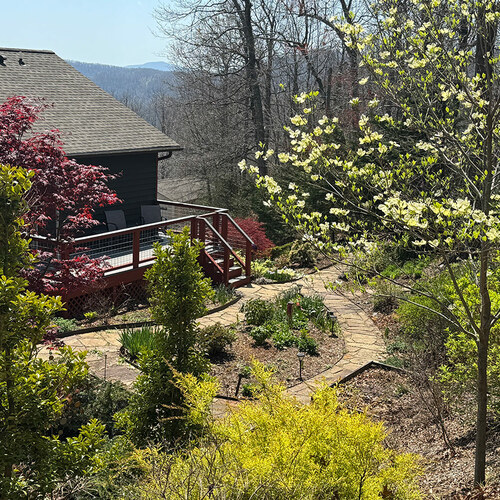Hi GPODers!
We’re received several submissions from Gail Bromer in Black Mountain, North Carolina over the years (check out those previous submissions here: Gail’s Garden in North Carolina, Replacing a Lawn With Wildflowers, A Perfect Addition to the Gray of Winter, Yearning for the Colors of My Garden, and Gail’s Garden on the Side of a Mountain). The fabulous collection of plants she cultivates outside and inside her home have inspired and intrigued every time. Gail’s latest submission continues that trend, but the inspiration comes from a scenario all of us hope to never be in. As her community heals from the devastating effects of Hurricane Helene that was catastrophic in her area of western North Carolina, spring growth and color is bringing a sliver of hope.
Spring has come to the mountains of Western Carolina.
Thank goodness. It has been a very dark time this fall and winter. The destruction from Helene is incomprehensible. It will be years until we recovery physically, economically, environmentally, and spiritually. Most of us suffer PTSD in one form or another. Every rain and windstorm reminds us of what we’ve been through.
Our small community of 47 homes had 14 landslides. 3 houses were totally destroyed. Another 5 have been declared uninhabitable. House and vegetative debris are still lying where they landed 6+ months ago. And we’re all still waiting for some encouraging world from FEMA.
We’re among the lucky ones. No one died here. Our community has bonded in a way it never did before. Those of us whose homes were spared do suffer some survivors guilt, but were blessedly spared from the total devastation of our lives.
In the midst of it all my gardens have largely survived and flourished. Yes, trees and shrubs were lost, but the colors of spring have arrived to remind us that life goes on. My wish for my neighbors who have lost so much is that they can rebuild their lives and feel the hope that springtime offers. My hope for my nation is that we all remember that we are stronger supporting each other.
If you saw my post yesterday on Earth Day, you saw a big bumblebee visiting my recently-bloomed azaleas. It’s amazing to think that a similar scene was happening in Gail’s garden a few weeks before and hundreds of miles south of where I’m located in Connecticut. This southern bumblebee was visiting her glorious Arctic Rose azalea (Rhododendron ‘Arctic Rose’, Zones 5–8).
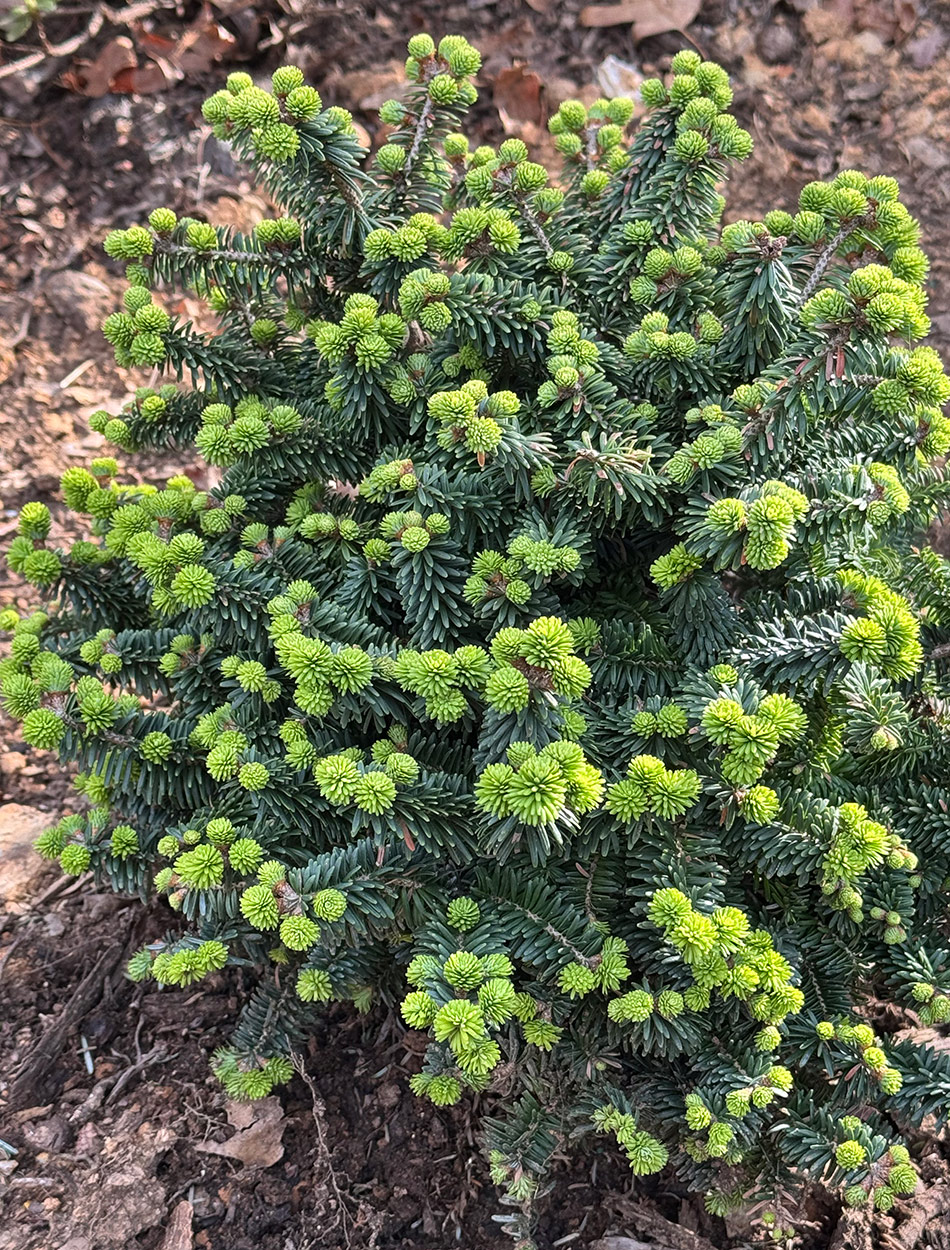 Anyone who thinks all conifers are boring, isn’t looking hard enough for the varieties that actually provide interesting color. This appears to be a ‘Piccolo’ balsam fir (Abies balsamea ‘Piccolo’, Zones 3–8), which produces theses bursts of chartreuse new growth that glow against the dark, mature needles.
Anyone who thinks all conifers are boring, isn’t looking hard enough for the varieties that actually provide interesting color. This appears to be a ‘Piccolo’ balsam fir (Abies balsamea ‘Piccolo’, Zones 3–8), which produces theses bursts of chartreuse new growth that glow against the dark, mature needles.
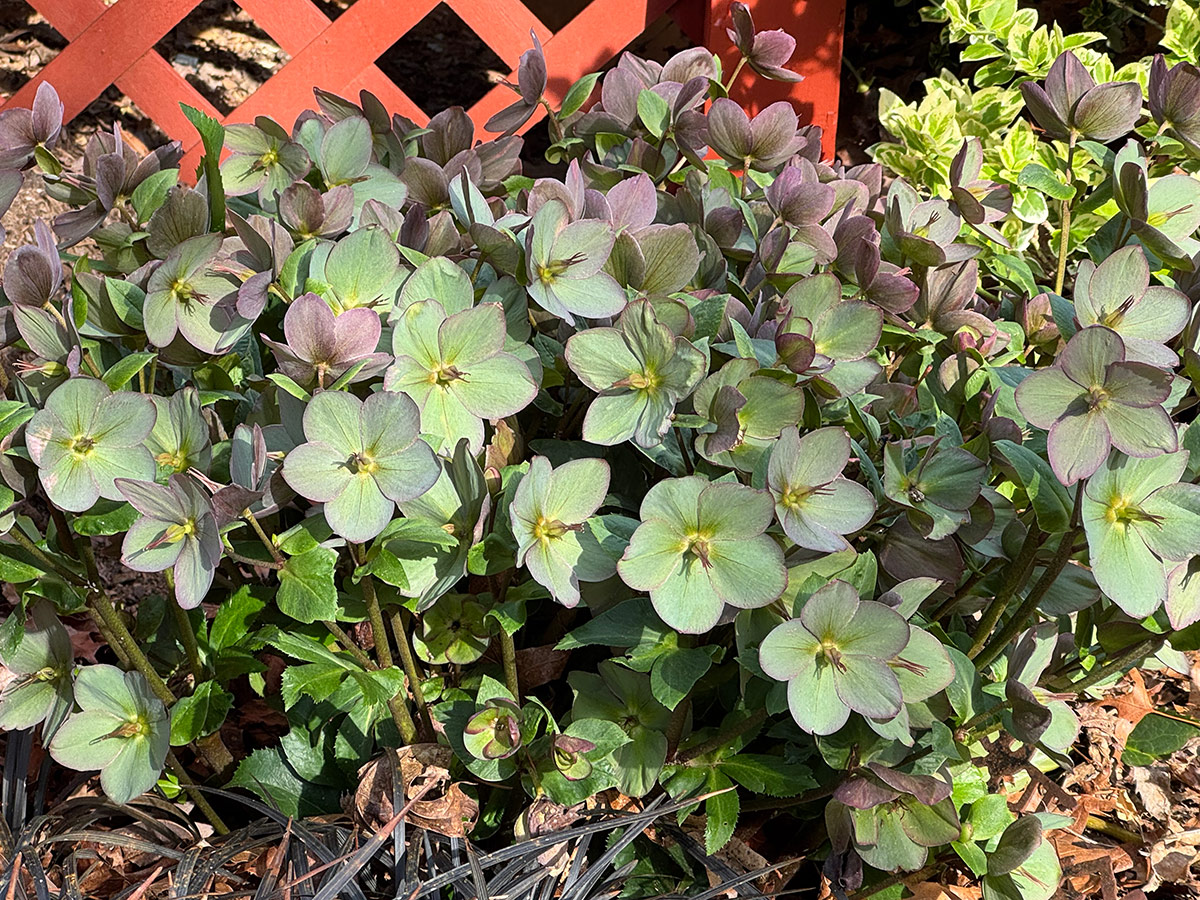 Gail is the next gardener to show off some absolutely gorgeous hellebores. This beautiful variety with green faces and dusty rose undersides is so covered in blooms you can barely see the foliage.
Gail is the next gardener to show off some absolutely gorgeous hellebores. This beautiful variety with green faces and dusty rose undersides is so covered in blooms you can barely see the foliage.
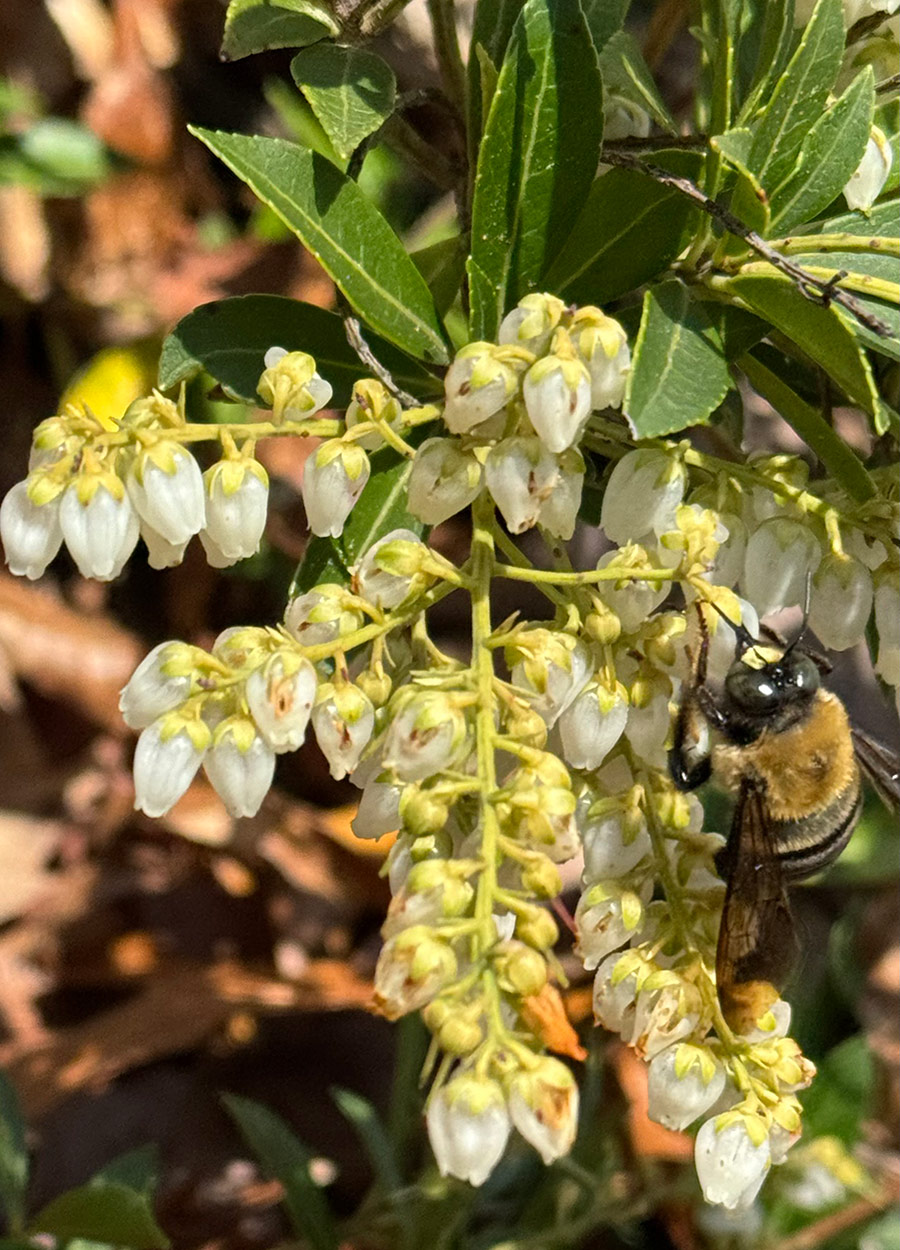 Obviously Gail has more than one treat for the earliest pollinators that visit her garden. Japanese andromeda (Pieris japonica, Zones 4–8) is evergreen, but becomes covered in these drooping clusters of fragrant flowers in spring.
Obviously Gail has more than one treat for the earliest pollinators that visit her garden. Japanese andromeda (Pieris japonica, Zones 4–8) is evergreen, but becomes covered in these drooping clusters of fragrant flowers in spring.
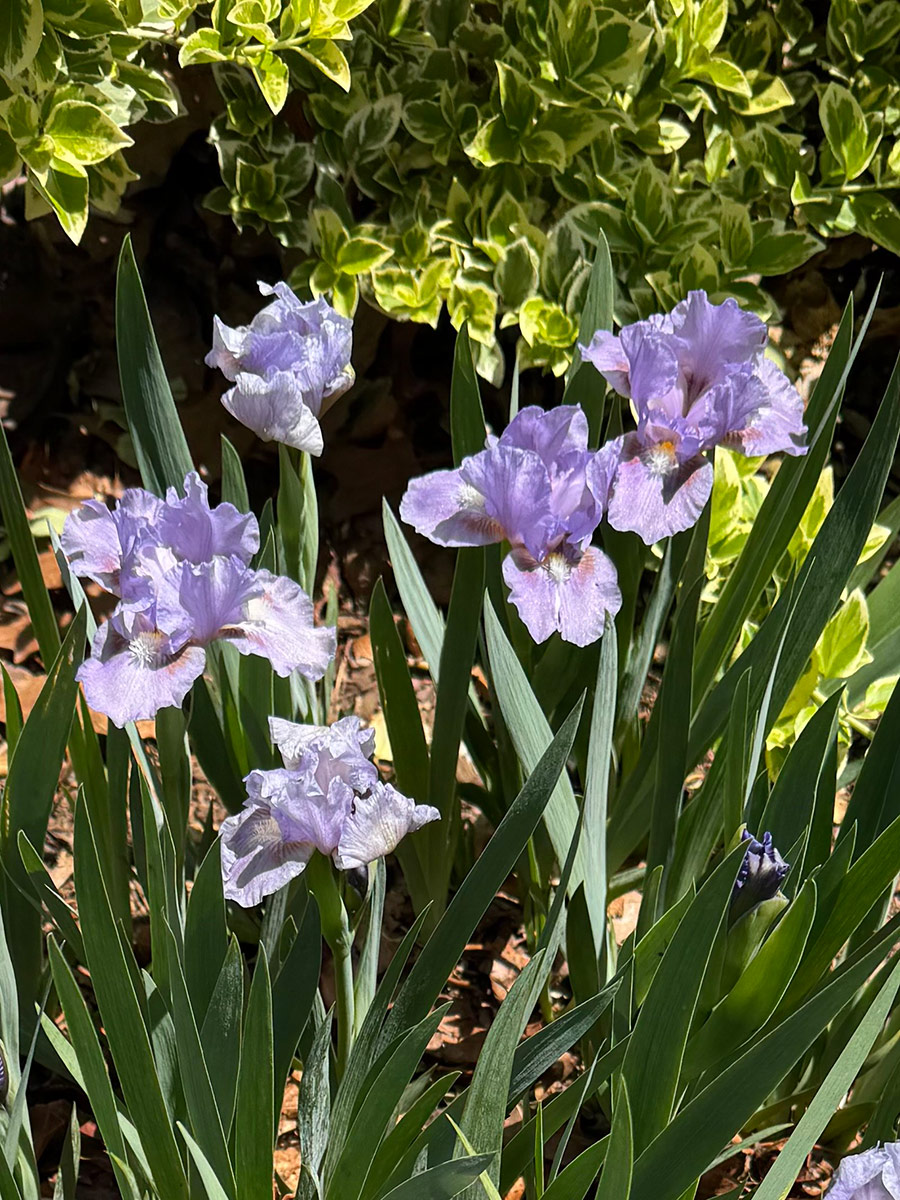 While many of us are still waiting for color to kick into high gear this season, Gail is already enjoying some lovely plant pairings and combinations. The lavender blooms on these bearded irises are absolutely sublime in front of the variegated chartreuse foliage of the shrub behind.
While many of us are still waiting for color to kick into high gear this season, Gail is already enjoying some lovely plant pairings and combinations. The lavender blooms on these bearded irises are absolutely sublime in front of the variegated chartreuse foliage of the shrub behind.
 I just absolutely adore how bright and vibrant Gail’s spring garden is. From the pops of bright pink flowers to the bright green foliage throughout and glowing yellow Color Guard yucca (Yucca filamentosa ‘Color Guard’, Zones 5–10) in the foreground.
I just absolutely adore how bright and vibrant Gail’s spring garden is. From the pops of bright pink flowers to the bright green foliage throughout and glowing yellow Color Guard yucca (Yucca filamentosa ‘Color Guard’, Zones 5–10) in the foreground.
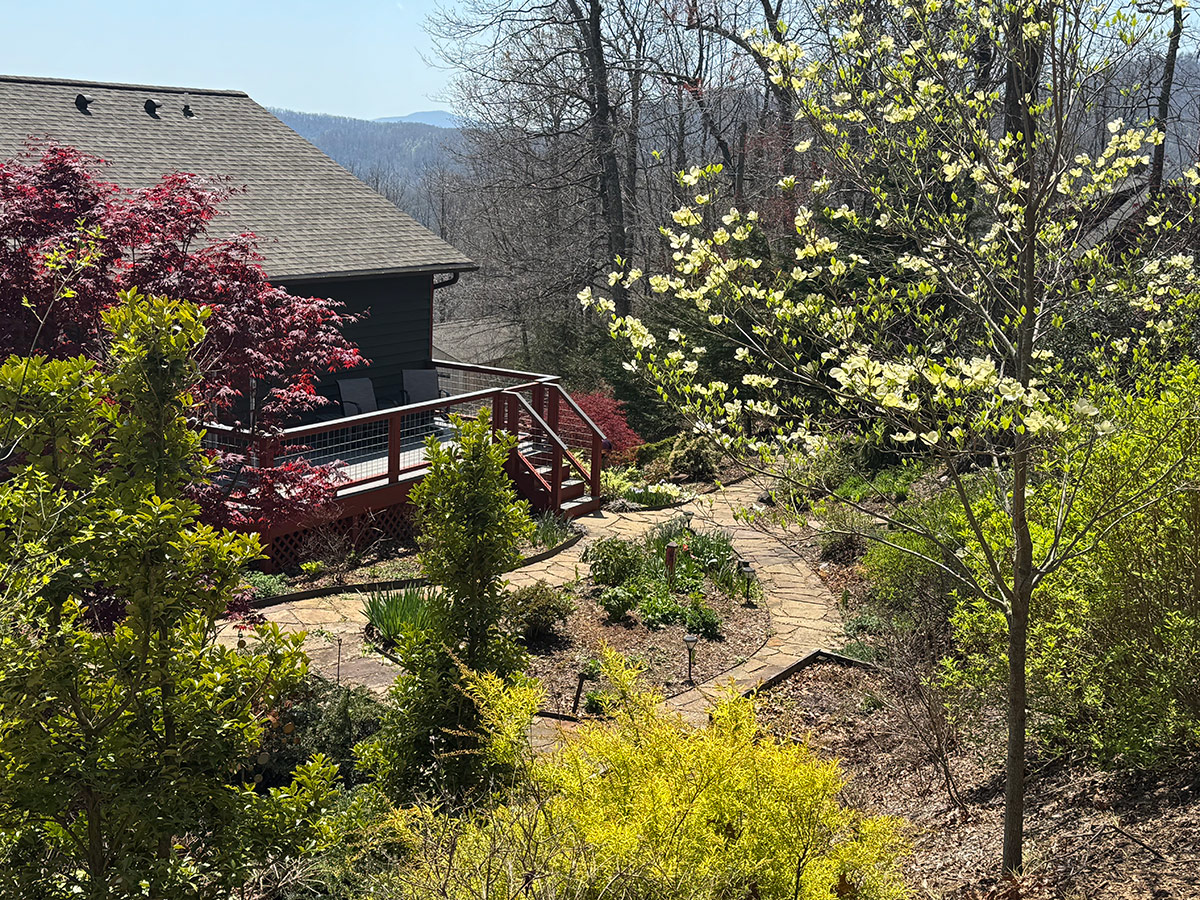 And a look at Gail’s garden from one of her many slopes, with the mountains and forest that surround just barely in view. I have envied Gail’s gorgeous landscape and mountain views when seeing past submissions, so it’s extra devastating to hear of the destruction this area faced and to imagine how scary this landscape becomes in a flooding situation. I’m relieved to know that Gail and the rest of her community survived the storm and are on the path to healing.
And a look at Gail’s garden from one of her many slopes, with the mountains and forest that surround just barely in view. I have envied Gail’s gorgeous landscape and mountain views when seeing past submissions, so it’s extra devastating to hear of the destruction this area faced and to imagine how scary this landscape becomes in a flooding situation. I’m relieved to know that Gail and the rest of her community survived the storm and are on the path to healing.
I’m also happy that there is already so much blooming and growing in Gail’s garden this spring that we have even more photos to share. Tune back into GPOD tomorrow to see more from Gail’s North Carolina garden as it shakes off the hardships of fall and winter to bring new life of the new gardening season.
And a reminder that the continuation of this blog is not possible without our generous readers and contributors. To keep Garden Photo of the Day alive and well, consider sharing photos of your spring garden! Follow the directions below to submit photos via email, or send me a DM on Instagram: @agirlherdogandtheroad.
We want to see YOUR garden!
Have photos to share? We’d love to see your garden, a particular collection of plants you love, or a wonderful garden you had the chance to visit!
To submit, send 5-10 photos to [email protected] along with some information about the plants in the pictures and where you took the photos. We’d love to hear where you are located, how long you’ve been gardening, successes you are proud of, failures you learned from, hopes for the future, favorite plants, or funny stories from your garden.
Have a mobile phone? Tag your photos on Facebook, Instagram or Twitter with #FineGardening!
Do you receive the GPOD by email yet? Sign up here.
Fine Gardening Recommended Products

The Crevice Garden: How to make the perfect home for plants from rocky places
Fine Gardening receives a commission for items purchased through links on this site, including Amazon Associates and other affiliate advertising programs.
A crevice garden replicates the environmental conditions of mountain tops, deserts, coastlines, and other exposed or rocky places on earth. These striking garden features provide perfect conditions for the plants native to these far-off places, bringing the cultivation of these precious gems within everybody’s reach.

Berry & Bird Rabbiting Spade, Trenching Shovel
Fine Gardening receives a commission for items purchased through links on this site, including Amazon Associates and other affiliate advertising programs.
Ideal Tool for All Gardeners Use: Our heavy duty trenching shovel is designed by a professional gardening tool designer. Lifetime Durability: This heavy duty drain spade is made of high-quality stainless steel, it is very strong and durable, even if it is used for high-strength work, it will not bend. Ergonomic Wood Handle: The handle of this planting spade is made of ash hardwood harvested from FSC-certified forests and has an ergonomically streamlined design, making it very suitable for everyone’s hands. Multi-Use: This digging shovel is generally used for digging trenches, digging holes, transplanting, edging, moving compost, cutting thick turf and furrowing. The sharp blade allows you to cut, scoop, dig, lift and dice in hard soil.

